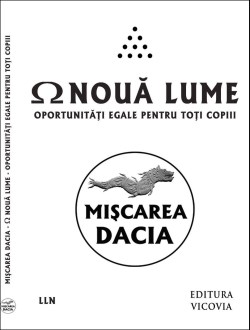Apeiron
Hegel referred to the basic substance of the universe as “Geist”, a complex German word that expresses notions of both mind and spirit. Geist is dialectically evolving towards what Hegel called ‘the Absolute’ – God. The Absolute represents the complete control of the physical world by the mental. It is a state of Absolute Knowledge and Absolute Freedom. The Absolute understands itself perfectly. Hegel is often interpreted as an idealist, denying the existence of the physical, but in fact, like all Illuminists, he considered the physical and mental to be two aspects of a single substance.

However, he certainly regarded the mental as the dominant aspect of the single mind-matter reality – the dialectical process is all about bringing mind to its highest possible expression – and to that extent can be regarded as an idealist. Hence “Geist” is carefully chosen to emphasise the mental aspect.
There is no word that perfectly captures the nature of the basic substance of the universe: the arche, the first principle. The Ancient Greek philosopher Anaximander used the word “apeiron”, which is usually translated as “a substance without definition that gives rise to all things and to which all things return, a sort of primal chaos.”
Illuminists most usually use the word “Becoming” to describe the single fundamental substance of the universe. “Becoming” is technically an adjective rather than a noun, but Illuminists prefer this word over any other because it makes clear the difference between Illumination and the false religions of Being such as Christianity, Islam and Judaism.
“Becoming” emphasises the changing, dynamic nature of the universe, the evolutionary, dialectical aspect that drives the universe forwards and upwards. “Being” on the other hand is frozen, static, conservative, resistant to change. Mathematician Roger Penrose has proposed that there are three kinds of reality: physical, mental and mathematical, all connected in an unknown and deeply mysterious way. In fact there is only one reality, which presents itself in two ways: mind and matter.
Mathematics, it is true, is more than just a language created by the mind. It might be said to be a deep expression of Nietzsche’s Apollonian ordering principle that seeks to shape the Dionysian chaos. Mind and matter, if they are to avoid an existence of meaningless chaos, must have a strong core of order and organisation, a tendency to obey natural laws. That tendency will never be precise, but it will be reliable on average, hence the statistical emphasis of modern Quantum Theory.
Mind and matter both have mathematics built into them. Mathematics can be defined as the science of pattern. Mathematicians look for patterns in numbers and space, in the physical world and abstract worlds. The mind cannot help looking for patterns. Humans look at the clouds in the sky and start to see meaningful shapes. People have reported seeing the face of Jesus Christ on slices of toast. At all times, the mind tries to shape and pattern sensory data. All of this is mathematical in nature.
Baseball players, basketball players, American football players, soccer players and most other sportspeople engage in remarkable feats of intuitive mathematics. Think of the skill involved in catching a ball while on the run: the catcher is subconsciously calculating the speed of the ball, its trajectory, wind speed, his own speed, the conditions under his feet, the interception point, the orientation of his hands etc. The person involved may know nothing about mathematics as an academic subject, he might even be hopeless at the subject, yet he can solve this complex maths problem as he’s on the move without carrying out a single conscious calculation. Autistic savants can carry out prodigious calculations in their heads faster than professors can solve them with a calculator. These examples prove how deeply embedded in the psyche mathematics is.
The Ancient Greek philosopher Pythagoras – another great Illuminist (and the first to be identified with Illumination’s fundamental doctrine of the transmigration of souls) – claimed that numbers are the arche. He also said that a mathematical Law called Harmony controlled the universe. Pythagoras is associated with the mystical idea of the Music of the Spheres (also known as Musica universalis – universal music): the most beautiful and perfect music of all, which permeates the entire universe but can be heard only by God. Music is audible mathematics. It is the sound of the Apollonian order in the universe. It has such a powerful effect on us because it resonates with the mathematical intuitions buried within us. When we hear harmonies, we are listening to orchestrated numbers; we are directly experiencing universal order in the form of musical notes. Discordant music, jarring notes are the province of Dionysian disharmony.
Schopenhauer said that music was a “copy of the will itself” and there’s much truth in this. Illumination is a religion that holds mathematics in the highest regard and assigns to it an elevated status, but it is not a separate reality as Roger Penrose believes. It is part of the fabric of mind and matter. It is the language of the fundamental ordering principle.
Excerpted, page 161
© The Illuminati’s Secret Religion
Artwork by Joshua Hehe











